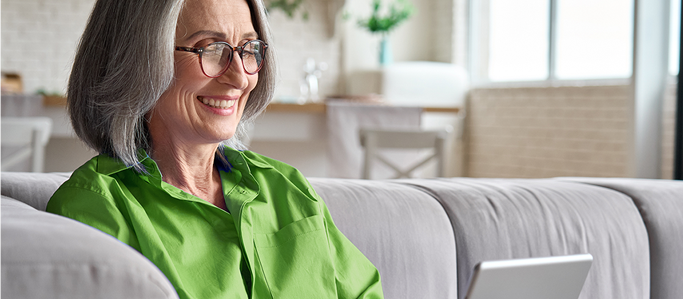How to get water out of your ears

How to get water out of your ears
8 min.
Publication Date: May 3, 2021
Article Updated: July 11, 2025
Swimming, showering, and other water-based activities are great ways to relax or stay active—but they can occasionally leave you with an uncomfortable side effect: water trapped in your ears. If you've ever experienced muffled hearing or a tickling feeling deep in the ear, you know just how irritating it can be.
While water usually drains out on its own, it sometimes gets stuck, increasing your risk of discomfort and even infection. Fortunately, there are safe and effective ways to remove it and prevent it from happening again.
Why water gets stuck—and why it matters
Your ears naturally produce cerumen (earwax), which helps keep them clean and repels water. Most of the time, any moisture that gets in will drain out on its own. But occasionally, especially after swimming or long showers, water can linger in the ear canal. If it stays trapped for too long, it creates the perfect environment for bacteria to grow, potentially leading to an outer ear infection known as swimmer’s ear.
If you notice pain, itching, redness, or fluid drainage, it may be a sign that bacteria have started to grow. While not usually serious, untreated infections can become painful and even lead to hearing problems. If water has remained trapped for more than a couple of days—or you experience signs of infection—it’s a good idea to consult a healthcare provider.
Easy at-home techniques for outer ear water
Start with these tried-and-true methods to help release water trapped in the outer part of your ear canal:
- Tilt and tug: Lean your head to the affected side and gently tug on your earlobe to help the water escape.
- Lie down on your side: Rest with the affected ear facing downward for several minutes and allow gravity to do the work.
- Create a vacuum: Cup your hand tightly over your ear and gently push and release to create suction that may pull the water out.
- Use a hairdryer (with care): Set it to the lowest heat and hold it about 12 inches from your ear. Gently move it back and forth while pulling on the earlobe to help evaporate the moisture.
It’s important to avoid inserting cotton swabs or any small objects into your ears. These can push water further in, damage the ear canal, or introduce bacteria, all of which increase the risk of infection.
What if the water feels deeper?
Sometimes, that full or muffled feeling isn’t caused by water in the outer ear canal but rather by fluid trapped behind the eardrum in the middle ear. This can occur after air pressure changes or during colds and allergies, when the eustachian tubes—which connect the middle ear to the back of the nose—become blocked.
To relieve this sensation, try yawning or chewing gum. These simple actions help open the eustachian tubes and allow fluid or pressure to escape. Another option is the Valsalva maneuver: gently pinch your nose, close your mouth, and attempt to exhale through your nose until you feel a light “pop” in your ears. This indicates that the tubes have opened. You can also try inhaling steam from a hot shower or bowl of water to loosen blockages and promote drainage.
If these techniques don’t relieve the sensation or it becomes painful, it’s best to speak with a healthcare provider, as fluid buildup behind the eardrum may require medical attention.
Should I use eardrops?
If simple techniques don’t clear the water, eardrops can be an effective next step—especially when earwax buildup may be contributing to the problem.
- Alcohol-based drops, often blended with vinegar, help evaporate moisture and discourage bacterial growth, making them a popular solution for lingering water in the ear canal.
- Hydrogen peroxide drops are another option; they can help break down wax, potentially freeing any trapped water behind it. These drops are available over the counter at most pharmacies and are generally safe when used as directed.
However, eardrops are not for everyone. If you have tubes in your ears, a history of eardrum perforation, or signs of an active ear infection—such as discharge or severe pain—you should avoid using drops altogether. In these situations, introducing any liquid into the ear canal could worsen the problem. If you’re unsure, it’s always best to consult a healthcare provider before using any type of solution.
How to prevent water from getting stuck
Prevention is the best strategy—especially if you swim often or are prone to ear infections. Consider wearing waterproof earplugs or a snug-fitting swim cap during water activities to keep moisture out. After exposure, gently dry your ears with a towel and tilt your head side to side to release any remaining water. Avoid inserting anything into your ears, even to dry them, as this can cause irritation or injury.
If you're especially prone to swimmer’s ear, using over-the-counter drying drops after swimming may be helpful as part of your regular routine.
When to see a doctor
While most cases of water in the ears resolve on their own or with simple home remedies, it’s important to recognize when professional care is needed. If the sensation of trapped water persists for more than a day or two, or if your hearing doesn’t return to normal after trying a few safe techniques, it could be a sign that something else is going on. Pain, swelling, redness, or clear fluid drainage from the ear may indicate an infection that requires medical treatment.
It’s also a good idea to seek help if you experience frequent episodes of trapped water, especially if you’ve had swimmer’s ear in the past. A doctor can evaluate whether earwax buildup, narrow ear canals, or other anatomical factors are increasing your risk. Taking early action helps prevent complications and protects your hearing over the long term.
Enjoy the water while protecting your hearing
Getting water trapped in your ears is common and usually harmless, but that doesn’t mean it should be ignored. Knowing how to safely remove the water, when to try over-the-counter remedies, and when to see a doctor can make a big difference in your comfort and hearing health.
With a few simple habits and a bit of caution, you can protect your ears and enjoy your time in the water without worry.



